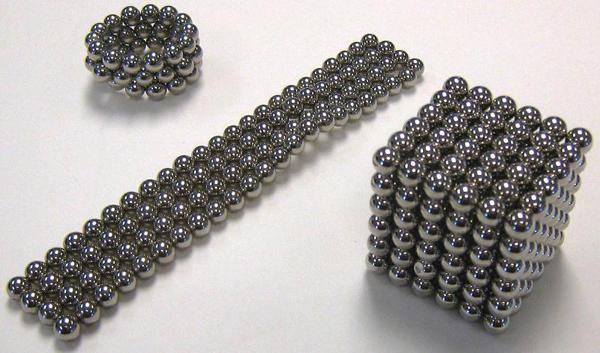Tiny Magnets Pose Dangerous Risk to Children, Study Finds

The number of cases of children ingesting magnets has tripled, resulting in serious injuries that require surgery, according to a new study.
Of particular concern to doctors is the increase in the number of severe injuries due to the smaller, more powerful magnets introduced to the market about five years ago, said Matt Strickland, one of the study's authors and a general surgery resident at The Hospital for Sick Children (SickKids) and the University of Toronto.
"With the inclusion of smaller, spherical magnets in children's toys, we are seeing an increased number of visits to the hospital for surgeries to remove them from the gastrointestinal tract," Strickland said. "Today's magnets are also 20 times more powerful than older magnets, with the potential to cause more damage."
These high-powered ball magnets are often sold in sets of 200 as jewelry kits or adult desk toys. [9 Weird Ways Kids Can Get Hurt]
Strickland's team focused their research on digestive-tract injuries because the majority of serious harm from magnets is due to perforations of the stomach, small bowel and colon. Many children in the study required surgery — in some cases, to remove small parts of their intestines.
In the study, researchers studied the trends of magnetic ingestions over a 10-year period. In order to reflect the introduction of small, spherical magnets in 2009, the study was divided into two time periods: hospital visits from 2002 to 2009 and those from 2010 to 2012.
They found thatout of 2,722 patient visits to their hospital for foreign-body ingestions, 94 children had ingested those magnets, including 30 kids who had ingested multiple magnets.
Sign up for the Live Science daily newsletter now
Get the world’s most fascinating discoveries delivered straight to your inbox.
The rate of injuries involving multiple magnet ingestions increased almost 10-fold between the 2002-2009 period and the 2010-2012 period. Six cases required surgery, all of which occurred in the period from 2010 to 2012.
The study is published today (May 16) in The Journal of Pediatrics.
"With the smaller magnets, children tend to ingest multiple pieces, which can adhere to one another as they travel through the bowel," Strickland said. "They can also attract other magnets in the gastrointestinal tract and tear a hole in the bowel."
Many children often don't exhibit symptoms right away, he added, and doctors may not discover the magnets until they do X-rays. But by that point, severe damage has usually been done.
Strickland said he thinks the technology is here to stay, so parents, teachers and children should be informed about the dangers of ingesting magnets. "Despite new magnet-specific toy standards, labeling requirements, product recalls and safety advisories issued in the past 10 years, continuing efforts should focus on educating people," he said.
Follow Live Science @livescience, Facebook & Google+. Originally published on Live Science.









